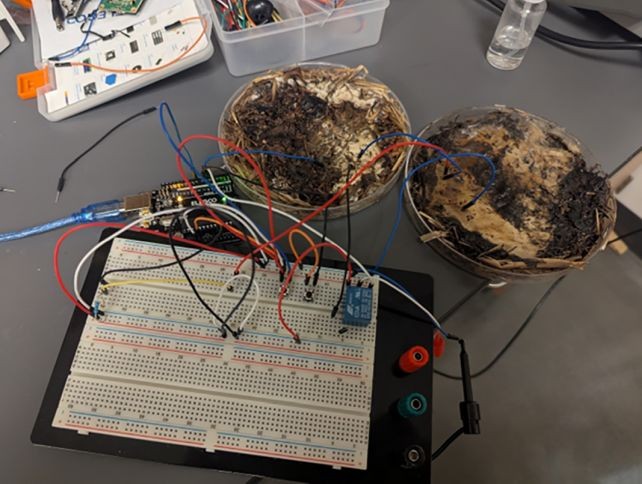A Living Memory Chip Grown from Shiitake Mushrooms
Imagine a computer memory grown, not manufactured. Scientists have built a working memristor — a tiny circuit element that remembers its past electrical state — using the mycelium of shiitake mushrooms instead of silicon. In early tests, the mushroom memristor switched at 5,850 times per second with about 90% accuracy. The device hints at a future of low-cost, scalable, and biodegradable memory that could power devices from everyday gadgets to space-age hardware. It’s not a finished product yet, but it’s a provocative glimpse of biology-enabled computing.

In This Article:
What Is a Memristor? Brain-Like Memory in a Circuit
Memristors are circuit elements that remember the amount of charge that has flowed through them. They can act like synapses — the junctions between neurons that regulate information flow — and are essential for brain-like computing. Mushrooms’ mycelial networks transmit electrical and chemical signals in ways that resemble neural networks, making them intriguing candidates for brain-inspired hardware. Yet the mushroom itself is not a brain, so engineers must coax it to behave like a usable device. Shiitake mushrooms are particularly robust and resistant to stressors like radiation, making them practical for such experiments.

Growing and Testing: From Petri Dishes to Circuits
The team seeded nine mushroom samples in substrate-filled petri dishes with shiitake spores and grew them under controlled temperature and humidity. When the mycelium covered the dish, they dried each sample in a well-ventilated area in direct sunlight to preserve long-term viability. Each prepared sample was then connected to a purpose-built circuit and subjected to carefully controlled electrical currents. Researchers noted that different parts of the fungus exhibited different electrical properties, depending on voltage and connectivity, leading to varying performance.

Performance, Limits, and Tuning
The researchers achieved a performance of 5,850 Hertz with about 90% accuracy from the mushroom memristor — roughly one switch every 170 microseconds. By contrast, the slowest commercially available memristors begin at roughly twice that speed, indicating substantial headroom for improvement. Higher voltages tended to degrade performance, a challenge the team mitigated by increasing the number of mushrooms in the circuit. As John LaRocco of Ohio State University puts it: “Being able to develop microchips that mimic actual neural activity means you don’t need a lot of power for standby or when the machine isn’t being used.”

Future Prospects and Cautions
Not a device ready for everyday use, but a promising path toward accessible, low-cost, biodegradable components with potential applications from personal devices to aerospace. The researchers summarize their outlook: “The future of computing could be fungal.” The study was published in PLOS ONE. As LaRocco adds about future exploration: “Everything you'd need to start exploring fungi and computing could be as small as a compost heap and some homemade electronics, or as big as a culturing factory with pre-made templates.”

